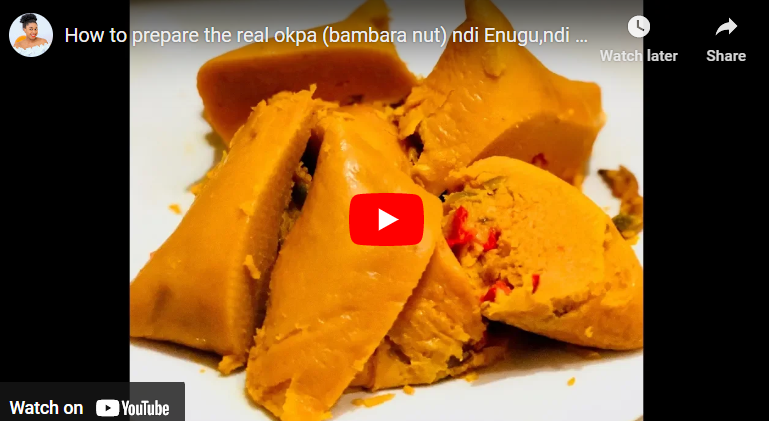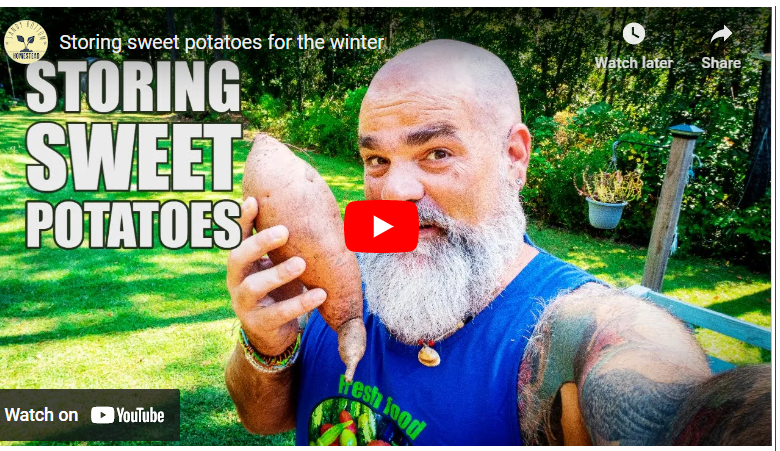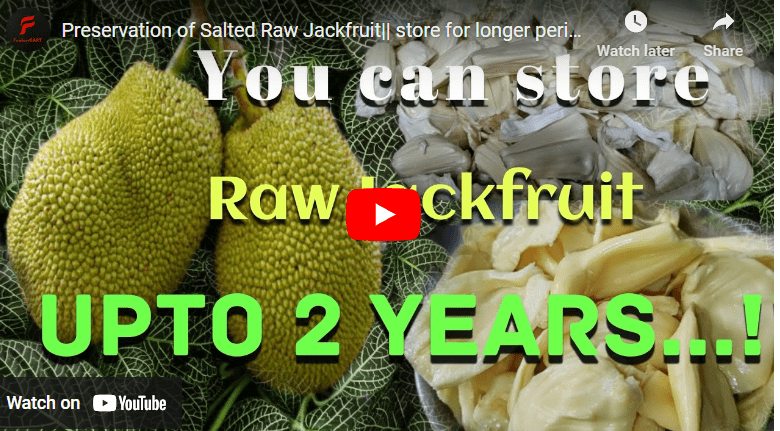Okpa flour is processed from Bambara beans/nuts which are a type of legume native to India and Africa. They are high in protein and are often used in puddings, curries, and soups.
Making Okpa flour is a great way to preserve and use these legumes in a wide range of recipes. The flour has a nutty flavor that can be used to make a variety of dishes, from pancakes and cakes to dumplings and bread.
Okpa flour is a type of flour made from okpa beans and is used in traditional Nigerian dishes. To process okpa flour, start by washing and soaking the okpa beans in water for at least 12 hours. Once the beans have softened, grind them in a food processor or blender into a fine powder. Finally, sift the powder through a fine-mesh sieve to remove any large chunks. The okpa flour is now ready to use in recipes.
In this article, we will provide step-by-step instructions on how to process Okpa flour. We will cover the preparation, grinding, sifting, and storage of the flour, so that you can make delicious dishes with this versatile ingredient.
How To Process Okpa Flour Step By Step Guide
Okpa flour is processed from Bambara beans or nuts which have been used for centuries in African dishes, especially in Nigeria where it is used to prepare Okpa, a popular local recipe.
Okpa flour is known for its high nutritional value. Making Okpa flour is a great way to enjoy this nutrient-dense food, as it can be used in a variety of dishes to add flavor, texture, and nutrition.
Here is the step-by-step guide on how to process Okpa Flour.
Read Also: How To Process Cashew Nuts At Home
Step 1. Preparation
Before you can make Indian cowpea/black-eyed pea flour, you need to properly prepare the Bambara Beans/Nuts. This process involves cleaning, soaking, and drying the Bambara Beans/Nuts.
Cleaning The Bambara Beans/Nuts
The first step in preparing the Bambara Beans/Nuts is to clean them. To do this, you should rinse the Bambara Beans/Nuts in a colander to remove any dirt or debris.
Once you have finished rinsing the Bambara Beans/Nuts, you should carefully inspect them for any imperfections and remove any discolored or damaged peas.
Read Also: How To Process Cassava to Garri
Soaking The Bambara Beans/Nuts
Once the Bambara Beans/Nuts are clean, they should be soaked in water overnight. This will help soften the peas and make them easier to grind.
Drying The Bambara Beans/Nuts
After the Bambara Beans/Nuts have been soaked, they should be spread out on a baking sheet and left to dry in the sun.
An alternate method is to use low heat in the oven to dry them. Once the Bambara Beans/Nuts are completely dry, they are ready to be ground into flour.
Step 2. Grinding
Grinding is a critical step when processing Bambara Beans/Nuts flour.
Choosing The Correct Mill
The process begins with selecting the right mill for the job. Depending on the desired grind level, a hammer mill or stone mill may be the best choice. Hammer mills can produce a coarse grind, while stone mills are best for a finer grind.
Read Also: How To Process Maize Into Flour
Once the mill is chosen, the grind level must be adjusted. This is done by adjusting the gap between the stones or hammers of the mill.
Below Is A Video Guide On How To Make Okpa
Setting The Correct Grind Level and Grinding The Dried Bambara Beans/Nuts
Next, the dried Bambara Beans/Nuts need to be added to the mill. The mill should be run until the desired grind level is achieved.
This can be determined by examining the texture of the flour. If the grind is too coarse, the mill should be run a bit longer.
If the grind is too fine, the gap between the stones or hammers should be adjusted to allow more coarse particles to pass through.
Read Also: How to Process Millet into Flour
Step 3. Sifting
Once the desired grind level is achieved, the flour needs to be sifted. A sifter should be chosen that can remove any remaining large particles or husks that may be present in the flour.
The sifter should be adjusted to the correct size so that it can remove any large particles without sifting out too much of the finer flour.
The ground Okpa flour should then be carefully poured into the sifter, and gently agitated or shaken to ensure all the flour is sifted.
Once the sifting process is complete, the Okpa flour is ready for packing and storage.
Step 4. Storage
Storage is an important part of the process of making Okpa flour. Once the flour has been processed and sifted, it is important to ensure that it is stored properly to maintain its freshness and quality.
The first step in storage is to package the Okpa flour. It is best to use airtight containers that are dark in color to protect the flour from light. This will help prevent the flour from becoming rancid.
Once the flour is packaged, it should be stored in a cool, dry place. Ensure that the containers are labelled with the date of production and the best before date. This will help you keep track of the shelf life of the flour.
It is also important to store the flour away from moisture and strong odours. This will help to keep the flour from becoming mouldy or developing off-flavours.
Where To Sell Okpa Flour?
Okpa flour is a delicious and nutritious Nigerian food staple. It can be used to make a variety of dishes, from soups to stews to cakes and more. If you are looking to sell okpa flour, there are many places you can do so.
One option is to sell it in local stores in your area. Many Nigerian stores specialize in selling traditional African ingredients and food products.
You can also check out stores in your local area that specialize in African cuisine, or even grocery stores that stock international food items.
You can also sell okpa flour online. There are numerous online stores that specialize in selling African ingredients and food products.
You can also create your own online store and start selling your okpa flour. This option gives you the ability to reach a much wider audience and potentially make more money.
You can also set up a booth at local markets, festivals, or other special events in your area. This is a great way to get the word out about your okpa flour and to make some extra money selling it.
What Are The Benefits Of Using Okpa Flour?
Okpa flour is a unique type of flour made from Bambara groundnuts. It is high in protein and fiber, low in fat and has a delicious, nutty flavor. Here are some of the benefits of using okpa flour:
1. Nutrition
Okpa flour is a great source of protein, fiber, and other essential vitamins and minerals. It is also rich in magnesium, copper, and iron. This makes it a great addition to any diet and can help to boost energy levels, muscle strength, and overall health.
2. Flavor
Okpa flour has a unique, nutty flavor that adds an extra layer of flavor to any dish. It can be used to add a flavorful twist to a variety of recipes, from baked goods to savory dishes.
3. Digestion
Okpa flour is high in dietary fiber, which is essential for digestion. Fiber helps to keep the digestive system running smoothly and can reduce the risk of certain health issues, including constipation and colon cancer.
4. Weight Loss
Okpa flour is low in fat and calories, making it a great choice for those looking to lose weight. The high fiber content can help to keep you feeling full for longer, which can help to reduce cravings and prevent overeating.
5. Blood Sugar
Okpa flour is low in carbohydrates, but high in dietary fiber which can help to regulate blood sugar levels. This can help to reduce the risk of developing diabetes and other related health complications.
How Is Okpa Prepared
Okpa is a beloved Nigerian dish, particularly in the eastern regions of the country. It has a delicious taste and is made with Bambara flour. This flour can be made from scratch by grinding the dried Bambara nuts or beans.
Begin by pouring the Okpa flour into a bowl. Then, mix in the palm oil until the flour changes from white to orange or yellow.
Afterwards, add the warm water and stir until there are no lumps, but the mixture shouldn’t be too watery. Add the ground crayfish, stock cubes, onions, pepper and salt to taste. Stir until everything is blended together.
Place the contents into a container of your choice and put into a pot of boiling water, similar to how you would with Moi Moi.
Allow it to boil for 45 minutes and add more water if the water begins to dry up. After 45 minutes, the Okpa should be ready. If you are still uncertain, let it boil for an additional hour.
How To Sieve Okpa Flour
- Begin by gathering all the materials needed to sieve okpa flour: a sieve, a bowl, and okpa flour.
- Place the sieve over the bowl and pour the okpa flour into it.
- Begin to sieve the okpa flour by gently shaking the sieve back and forth. This will help to remove any lumps or clumps in the flour.
- Continue to sieve until all of the okpa flour has gone through the sieve and any lumps or clumps have been removed.
- Once all of the okpa flour has been sieved, remove the sieve from the bowl and discard any lumps or clumps that were removed.
- Your okpa flour is now ready to be used in your recipes.
Ingredients For Okpa
For Okpa, you will need
- 500 grams of Bambara nut flour
- 50 milliliters of palm oil (or more or less, depending on your preference)
- 2 tablespoons of ground crayfish (optional)
- 2 crushed stock cubes
- 1 small onion (chopped into tiny bits)
- ground chili pepper (to taste)
- salt (to taste)
- warm water (as needed)
- You will also need a container for cooking, such as bowls, aluminum foil bags, banana leaves, Uma leaves (Thaumatococcus Daniellii) or heat proof nylons.
Conclusion
Processing Okpa flour can be a rewarding experience, providing you with a healthy, gluten-free flour to use in a variety of recipes. Cleaning, soaking, drying, grinding and sifting the Okpa is an important step in the process, and should not be overlooked. Proper storage of the flour is essential in order to ensure its freshness and shelf life. With a bit of time and effort, you can enjoy the benefits of homemade Indian Okpa flour.




